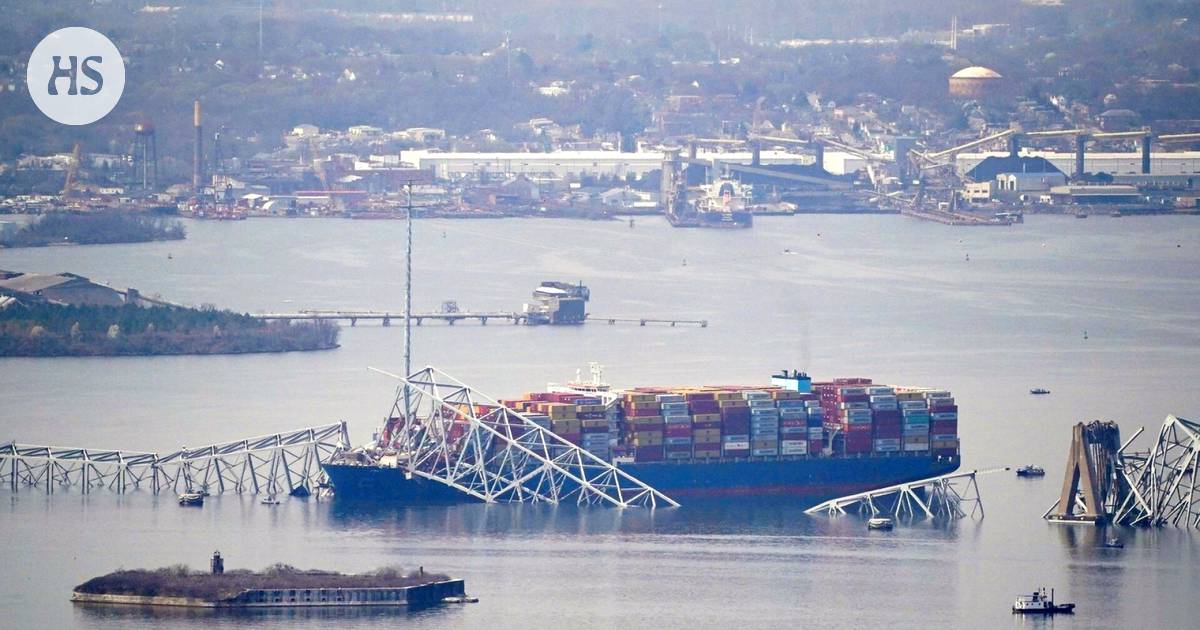Massa explains why the collision of the cargo ship, which was moving even slower than the cyclist, caused huge destruction.
Rahtilaiva Dali crashed into a pillar of the Francis Scott Key Bridge with a force comparable to a rocket launch.
This was the end result The New York Times (NYT), which, despite the lack of information, tried to answer the question of how a cargo ship traveling slower than a normal bicycle rider could cause such great destruction when it collided.
The U.S. newspaper says that slowing down a full cargo ship would have required a force of 12 million Newtons, even according to the most conservative estimate. According to the magazine, a realistic estimate would be more than 100 million newtons. By comparison, the thrust of the Saturn V launch, known as the Moon Rocket, was 35 million newtons.
A large cargo ship lost control and crashed into a bridge in the US state of Maryland in Baltimore early Tuesday. The entire middle section of the four-lane bridge, a lattice structure supported by two columns, collapsed. Six people working on the bridge died.
A collision According to The New York Times, the force is explained by the enormous mass of the cargo ship instead of its speed. According to the newspaper, several experts have checked the calculations.
The New York Times estimates that the mass of the cargo ship was at least 100,000 tons, as it is known that there was at least some cargo on board.
News agency AP according to the cargo ship weighs 95,000 tons even when empty. Raised vertically, the ship would be almost as tall as the nearly 330-meter Eiffel Tower in Paris with its antennas. According to the news agency, the ship can hold 10,000 20-foot or about six-meter sea containers.
According to The New York Times, the freighter was moving at a speed of about 12.5 kilometers per hour at the time of the collision. According to AP, the speed was about 14.5 kilometers per hour.
The New York Times made calculations about the force of the collision with the Dali freighter, but emphasizes that the calculations are simplifications and involve uncertainties.
Cognoscenti disagreed in an interview with The New York Times about whether any bridge should withstand a container ship collision at all.
Professor of Engineering, University of Maryland So Attoh-Okine estimates that 95-99 percent of the bridges would be damaged in a situation like the Dali crash.
Professor of Engineering, University of Michigan Sherif El-Tawil instead tells the magazine that it would be possible to design a bridge that could withstand a similar collision.
“If this bridge had been built according to today’s standards, it would have lasted.”
